The Coalition of Advocates for Global Health and Pandemic Preparedness, a group of organizations advocating for a holistic and equitable approach in pandemic preparedness, offers several revisions to the April 18 revised Pandemic Accord draft.
Joint Statement on the April 18th Revised Pandemic Accord Draft
Biomedical HIV Prevention Summit and PrEP in Black America Summit
Last week, 1,000+ community advocates, researchers, policy experts, federal public health leadership, medical and service providers from around the US and Puerto Rico attended the NMAC annual Biomedical HIV Prevention Summit in Seattle, Washington. The discussion and debate on PrEP access, especially for racial and ethnic minorities and key populations, PrEP research, care, policy and community-based programs are ones to follow. AVAC’s John Meade (Senior Program Manager, Policy), Jessica Salzwedel (Senior Program Manager: Research Engagement) and Kenyon Farrow (Communications Director) presented in workshops and satellite sessions at the Summit and at the PrEP in Black America preconference
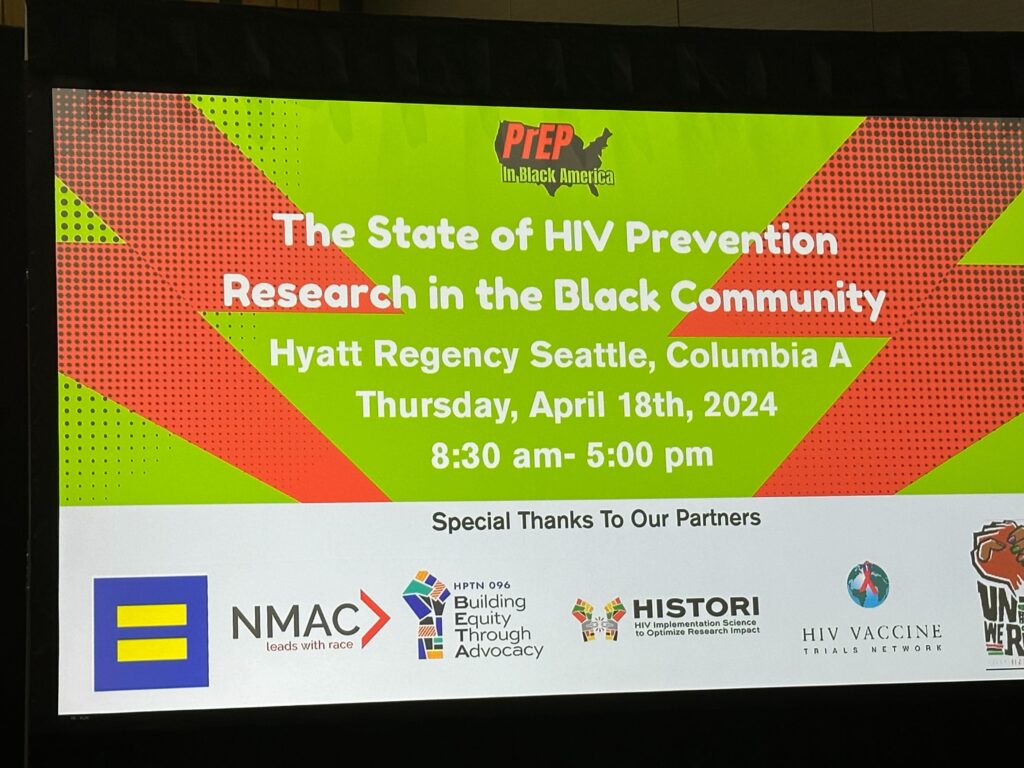
The Summit included sessions that updated community advocates on the latest in biomedical research for new diagnostics, PrEP, PEP, STIs and vaccines. Meade co-presented a Clinical Trials 101 for community advocates to learn more about the research process. Farrow presented an epidemiological overview on HIV and Disparities in the United States for NMAC’s Gay Men of Color Fellows.
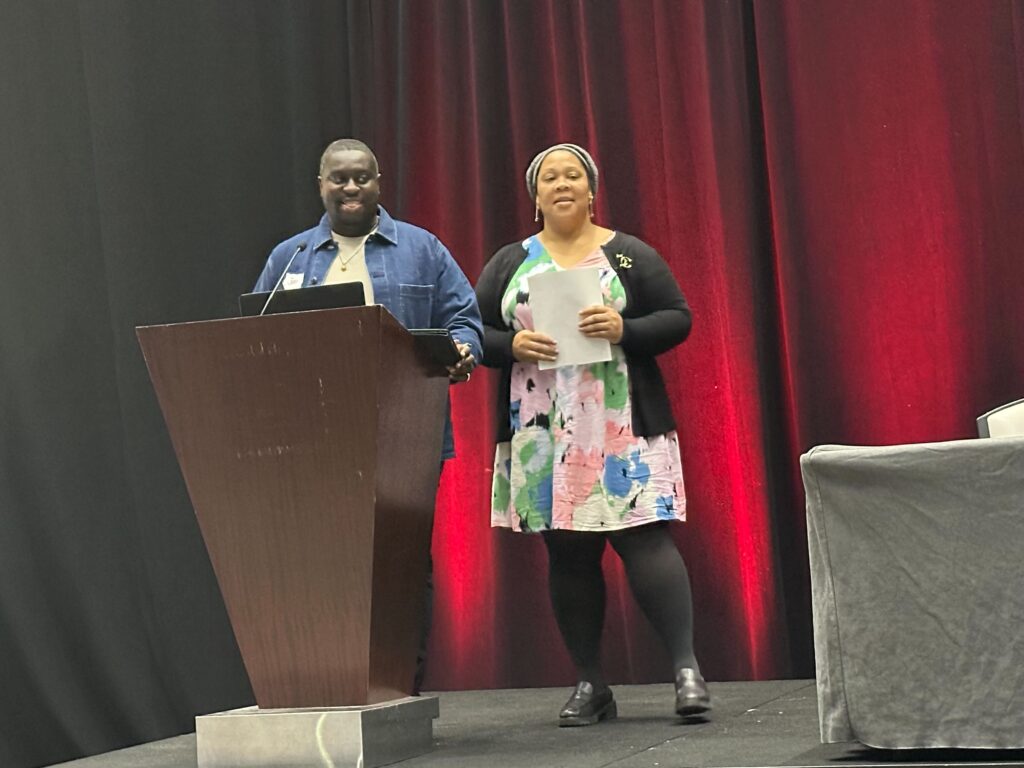
All three AVAC staff contributed to the PrEP in Black America: The State of HIV Prevention Research in the Black Community pre-conference, organized by PrEP in Black America (PIBA). PIBA began in 2022 as a community-led effort to increase Black community mobilization and engagement in PrEP research, policy and access programs. Farrow and Meade are PIBA cofounders, and Meade facilitated the day’s agenda, with more than 200 attendees focused on identifying the research gaps that need to be addressed to increase knowledge, access and use of PrEP. Data shows that while Black people in the U.S. make up 42% of all new HIV diagnoses in 2021, they were only 14% of all PrEP users. By comparison, white Americans are 65% of all PrEP users, but only 26% of all people diagnosed with HIV in the same year.
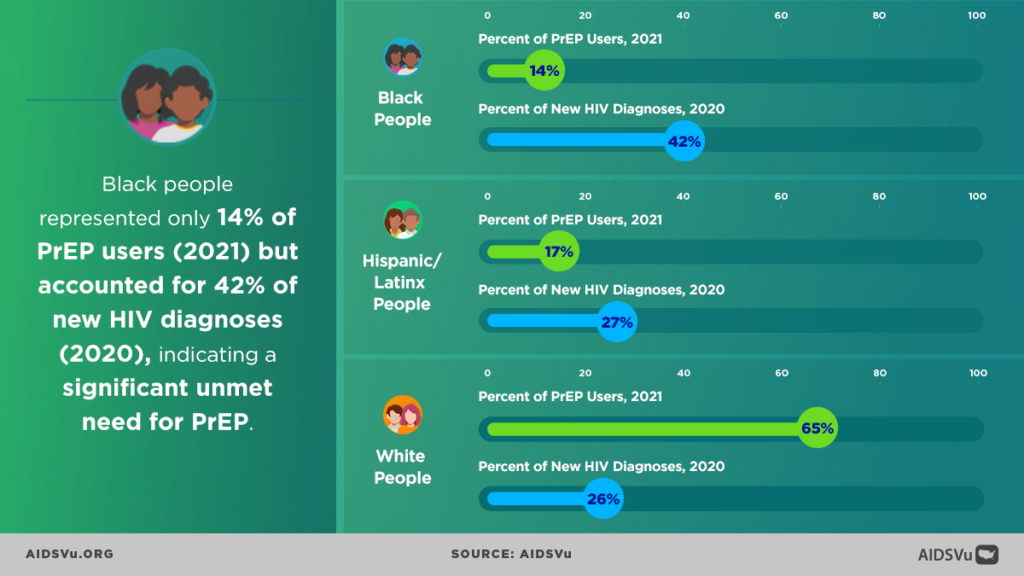
Salzwedel co-led the closing consensus session at PIBA, a discussion where attendees named research priorities to be later released as part of a National Black-Centered Biomedical HIV Prevention research agenda. One of the most important priorities named, however, goes beyond singling out the right research questions. Attendees showed strong consensus that the research process itself needs to change. Attendees expressed a need and desire for more investment and commitment to community-led research, that can reflect non-traditional ways of gathering data and designing trials and ending the extractive approach that characterizes conventional researcher/community relationships.
To stay up to date with PrEP in Black America, follow them on Instagram and Facebook.
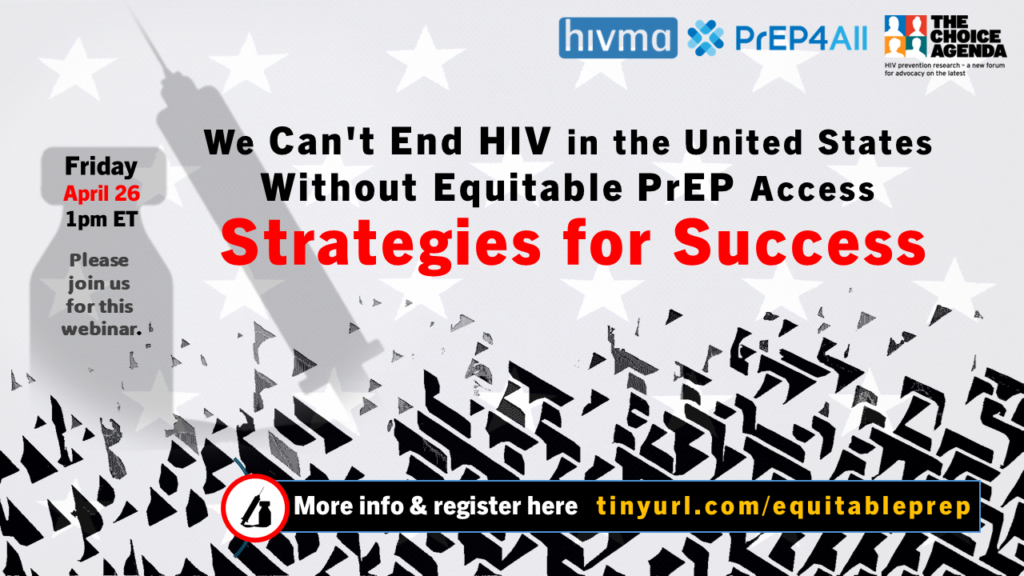
Join AVAC, The Choice Agenda, PrEP4All and HIVMA on Friday, April 26 for a special follow-up webinar, We Can’t End HIV in the United States Without Equitable PrEP Access: Strategies for success. Register here.
Avac Event
Just What is Discovery Medicine? And What Does it Mean for HIV Vaccine Research?
Participants joined to gain a broad understanding of Discovery Medicine including an overview of the current landscape for HIV vaccines. We also discussed what it means for HIV vaccine research and development moving forward, with a focus on community and advocacy priorities.
Speakers:
- Dr. Betty Mwesigwa, Makerere University Walter Reed Project
- Tian Johnson, BRILLIANT HIV Vaccine Discovery Consortium
- Dr. Cathy Slack, HIV AIDS Vaccines Ethics Group
- Dr. Sandhya Vasan, Henry M. Jackson Foundation for the Advancement of Military Medicine, US Military HIV Research Program
Moderators:
- Stacey Hannah, AVAC
- Louis Shackelford, HIV Vaccine Trials Network (HVTN) & COVID-19 Prevention Network (CoVPN)
Recording / Full Slides / Resources
Introducing Advocacy Chronicles: A new AVAC podcast takes you behind the scenes with leading advocates
AVAC is thrilled to announce our new PxPulse podcast series, The Advocacy Chronicles, featuring conversations with leading advocates who take us behind the scenes on critical issues at the forefront of global health equity. In each concise conversation, a leading advocacy champion will talk about a priority community issue they identified, the tactics they used to address it, and the wins and outcomes they achieved.
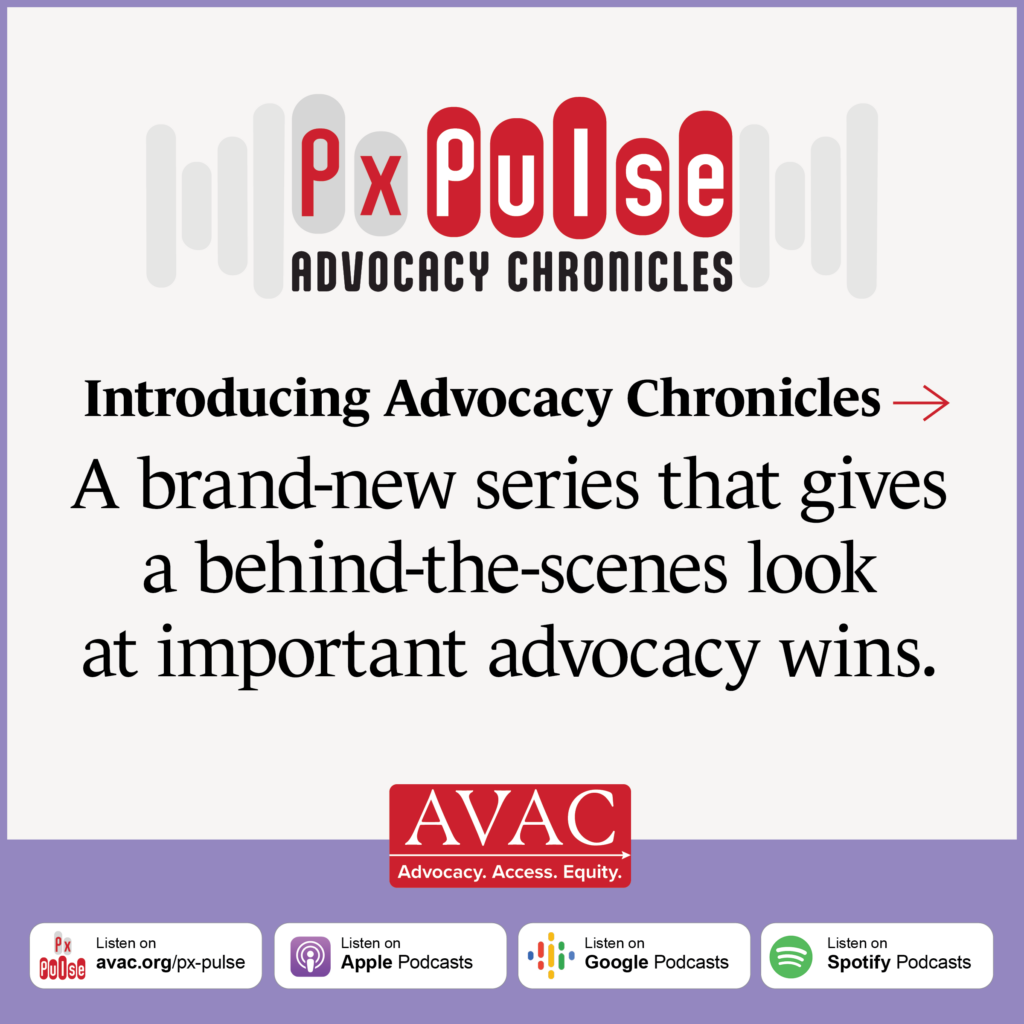
Our debut episode of PxPulse: The Advocacy Chronicles is with Yvette Raphael, the Executive Director of Advocacy for Prevention of HIV and AIDS (APHA), and one of South Africa’s leading human rights activists. Yvette co-chairs the African Women Prevention Community Accountability Board (AWPCAB), which launched The HIV Prevention Choice Manifesto in September 2023. Yvette discusses the manifesto – a global call, developed and implemented through support from the CASPR project, for increased political and financial commitment to ensure every proven method of HIV prevention is integrated into the HIV response. She lays out why The Choice Manifesto matters, how advocates are leveraging it, and what tactics will advance its priorities.
Find the full episode here. Follow The Advocacy Chronicles on PxPulse to hear about the issues that advocates are taking on to advance HIV prevention and what they are learning in the process. Upcoming episodes will feature champions behind campaigns to decriminalize sex work; new advocate-created platforms for ongoing engagement between government and young women; successful efforts to set targets and secure funding from PEPFAR; advocacy to challenge anti-gay hate laws and protect communities of key populations, and more!
Subscribe on Apple Podcasts to catch every episode!
Save the Date!
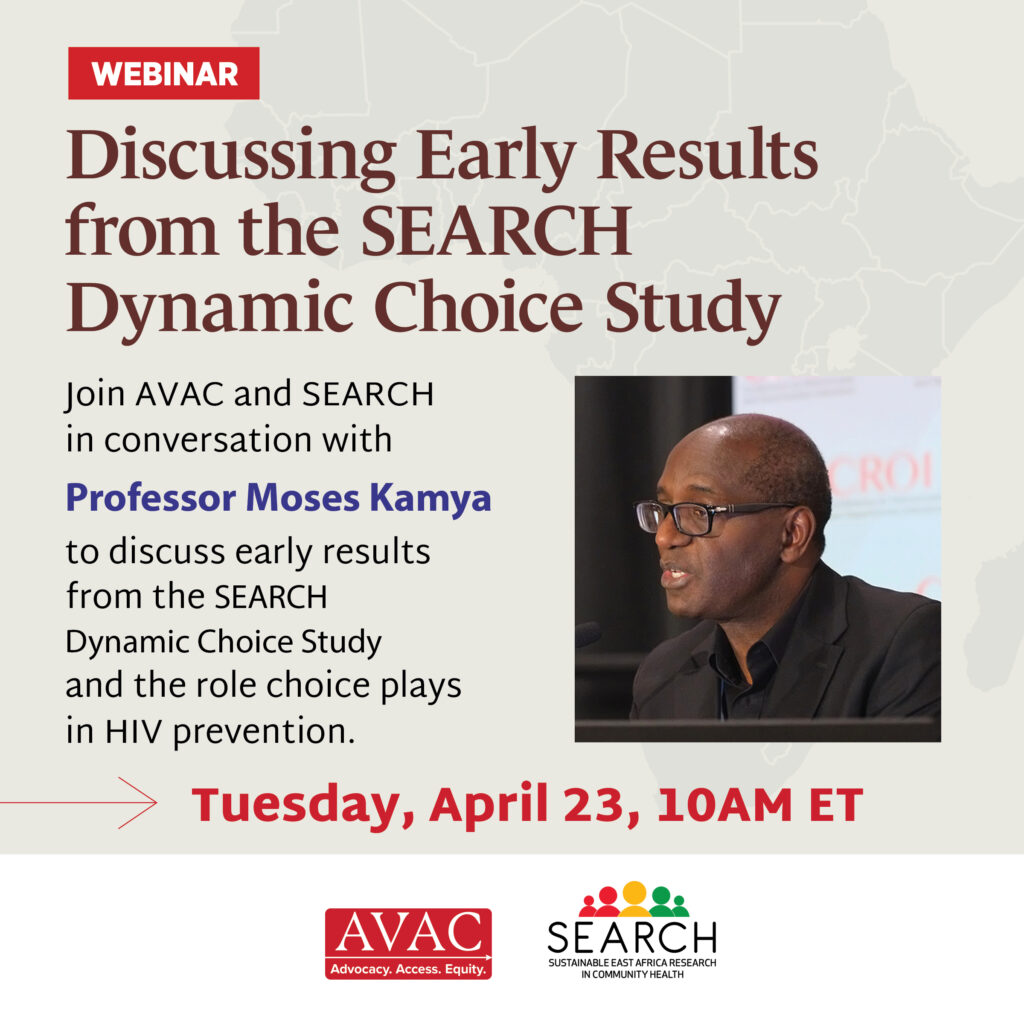
Discussing Early Results from the SEARCH Dynamic Choice Study
Join AVAC and SEARCH in conversation with Professor Moses Kamya of Makerere University to find out why the early results of the SEARCH Dynamic Choice study were some of the most exciting news to come out of the CROI meeting in 2024. The webinar will consist of a presentation by Professor Kamya, followed by a robust discussion about the role of choice in HIV prevention.
Avac Event
PrEP and the Role of HIV Self-Testing
HIV self-testing (HIVST) is a safe, accurate, and effective alternative to provider-administered testing that many users prefer for its convenience and confidentiality. At IAS 2023, WHO issued a new recommendation to offer HIVST for PrEP initiation and continuation as an innovative way to increase PrEP access and coverage and further simplify PrEP delivery. However, many implementers still have questions on how to effectively roll out and scale up this important self-care intervention.
On May 23, AVAC and WHO hosted a webinar to learn more about WHO guidance on use of HIVST and to hear directly from a panel of experts on their experiencing rolling out HIVST for PrEP, guidance on procurement and costing, and more.
Recording / Slides
PxPulse: The Advocacy Chronicles with APHA’s Yvette Raphael
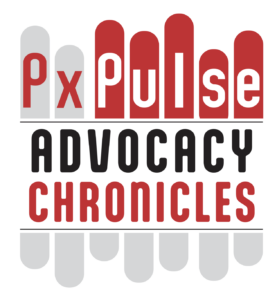
Our debut episode of the Advocacy Chronicles features Yvette Raphael, the Executive Director of Advocacy for Prevention of HIV and AIDS (APHA) in South Africa, and a leader in the development of The Choice Manifesto, supported from start to finish by CASPR.
As co-chair of the African Women Prevention Community Accountability Board (AWPCAB), Yvette and other board members launched the manifesto in Kampala, in September 2023, calling for choice in HIV prevention options for women — such as oral and injectable cabotegravir for PrEP, the dapivirine vaginal ring and the Dual Prevention Pill — and a commitment to expanding access to them. A call heard by UNAIDS Executive Director Winnie Byanyima, who was on hand at the launch to endorse the manifesto.
Yvette, who is also a 2014 AVAC Advocacy Fellow and celebrated as one of South Africa’s leading human rights activists, lays out why The Choice Manifesto matters and how advocates are leveraging it.
Resources
- The Choice Manifesto, AWPCAB
- Reclaiming Choice: The launch of the HIV Prevention Choice Manifesto and what that means, AVAC Blog
- HIV Prevention Choice Manifesto for Women and Girls in Africa launched, UNAIDS
- Stakeholder Commitments to the Choice Manifesto
- Learn more about APHA
- Learn more about CASPR
For Us by Us: PrEP in Black America – A Master Plan for HIV Prevention in Black America
In the spirit of seeking change to ameliorate the devastating impact of HIV in Black communities through biomedical HIV prevention, Black leaders convened the “PrEP in Black America (PIBA) Summit” virtually and in person on September 13, 2022, in Atlanta, Georgia. Attendees have included Black activists, researchers, scientists, providers, and policymakers from across the country representing more than 50 organizations. Following the event, PIBA generated a report summarizing the event and key recommendations entitled, “For Us by Us: PrEP in Black America – A Master Plan for HIV Prevention in Black America.”
Read the full report, “For Us by Us: PrEP in Black America – A Master Plan for HIV Prevention in Black America” here.
Avac Event
The Importance of HPV Vaccination Among People Living with HIV
HPV vaccination prevents 6 types of cancer and genital warts, including cervical cancer. Women living with HIV are up to six times more likely to develop invasive cervical cancer than their HIV-negative peers, but HPV immunization rates among this population remain low. During World Immunization Week, AVAC and TogetHER for Health co-hosted a discussion to learn more about the science behind and implementation challenges specific to expanding access to HPV vaccination for people living with HIV.
- Mandisa Dukashe, HIV Survivors and Partners Network
- Dr. Betty Njoroge, Kenya Medical Research Institute
- Dr. Christopher Morgan, Jhpiego
This webinar was co-hosted with TogetHER for Health
Recording / Mandisa Dukashe Slides / Dr. Betty Njoroge Slides / Dr. Christopher Morgan Slides
Announcing the 2024/25 AVAC Advocacy Fellows
We are pleased to announce our 13th class of the flagship AVAC Advocacy Fellows Program for 2024-2025! This group of seven advocates will participate in an 18-month program that supports their advocacy efforts, invests in the further development of their skills, shapes the agenda for HIV prevention research, and influences how quickly new interventions move into policy and programs in their communities and countries.
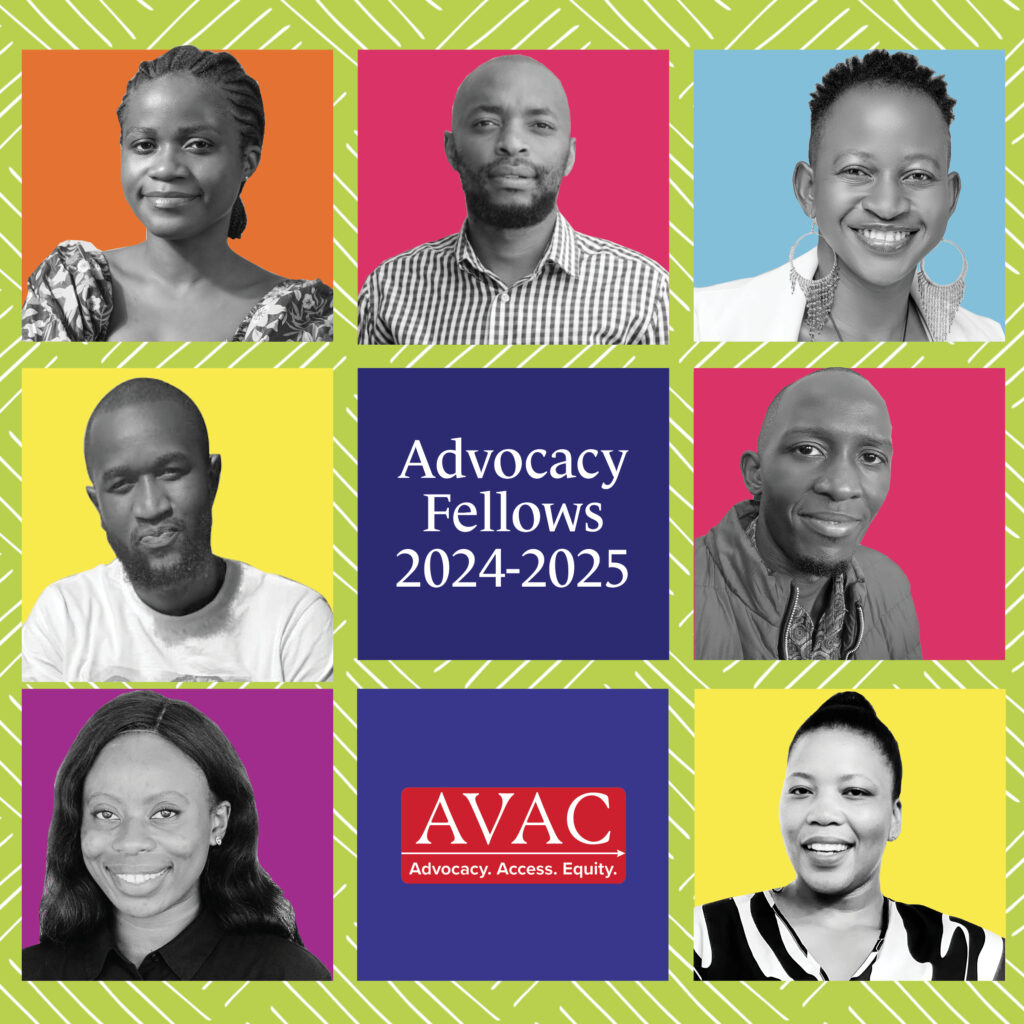
These Fellows were selected from a pool of 200+ applicants from seventeen countries to pursue evidence-based advocacy on a range of issues related to HIV prevention. The 2024/25 Advocacy Fellows and their host organizations include:
- Pamela Fuzile, Desmond Tutu Health Foundation, South Africa
- Samuel Anyula Gorigo, HOYMAS, Kenya
- Bahati Thomas Haule, DARE Organization, Tanzania
- Ezra Meme, We Rise and Prosper, Uganda
- Rhoda Msiska, Copper Rose Zambia, Zambia
- Elina Mwasinga, Coalition of Women Living with HIV and AIDS, Malawi
- Mokone Rantsoeleba, Phelisanang Bophelong HIV/AIDS Network, Lesotho
Congratulations to our new class of Fellows and thank you to all the applicants and their proposed host organizations for the time and effort put into the application process, and to the independent review committee of advocates, scientists and former Fellows and hosts who guided our decision-making.
About AVAC’s Advocacy Fellows Program
Achieving successful HIV prevention relies on programs and research shaped by communities and grounded by their needs and priorities. Skilled and informed community advocates drive this process. AVAC’s Advocacy Fellows Program expands and strengthens the capacity of civil society advocates and organizations to monitor, support and help shape HIV prevention research and rapid rollout of new effective interventions in low- and middle-income countries facing substantial HIV burdens.
The program provides intensive support to emerging and mid-career advocates to execute advocacy projects addressing locally identified gaps and priorities. Fellows receive comprehensive training, financial backing, and technical assistance to strategize and execute a targeted 18-month project hosted by an organization within their country.
In its 15-year history, nearly 100 advocates working with 70+ partner organizations across 15 countries have participated in the program. They have influenced policy, championed community perspectives, strengthened healthcare systems, demystified HIV prevention research, advocated for fairness and transparency on local, regional, and global scales and now lead many national and regional organizations. Discover more about the program’s impact here. And view video reflections from Alumni Fellows both here and here.
AVAC Response to Uganda’s Constitutional Court Ruling on the Anti-Homosexuality Act
AVAC is gravely concerned with the Constitutional Court of Uganda’s recent decision to uphold the core provisions of the Anti-Homosexuality Act of 2023 (AHA) that was signed into law nearly one year ago. AVAC stands in solidarity with the LGBTQIA+ community in Uganda, and globally, in calling out this dangerous law.